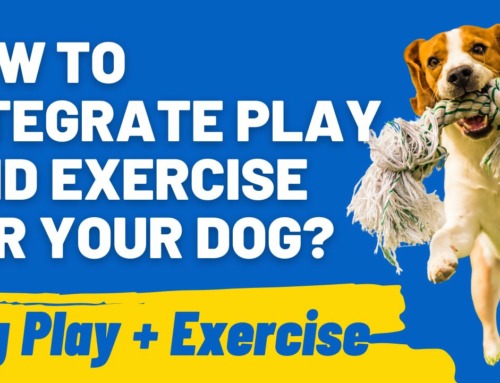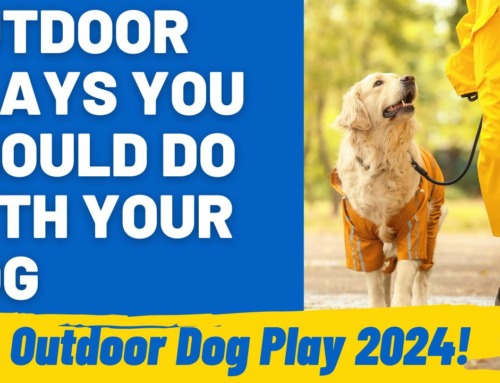Driving with a puppy is just one of many new and exciting experiences you and your new furry best friend will get to have together. Still, there are some things to consider when driving with a puppy. If you don’t properly prepare, driving with a puppy can be distracting and dangerous.
One thing you don’t want to happen while you’re driving is for your pup to climb in your lap, paw or nudge you, block windows, get car sick, or step on the gear shift. Thankfully, there are things that you can do to help make the ride easier and safer for both you and your puppy.
How do you travel alone with a puppy in the car?
As tempting as it may be, never drive with your puppy on your lap. This puts both you and the puppy at risk for serious harm. The puppy could be wiggly and cause you to become distracted while driving. Even if the puppy is sleeping contentedly on your lap, if an accident were to happen, the airbag could seriously injure your pup.
In order to travel alone with a puppy, your best bet is going to be safely restraining your pup in some type of way. A few of the most popular options for pet parents include a crate or kennel, a safety harness with a dog seat-belt, or a doggie car seat.
If using a crate when traveling alone, it’s best to try to buckle the crate in so it doesn’t go flying if there is an accident. Some companies make specific crates for puppies to be buckled up in.
It’s also best to place the crate on the front passenger seat if possible so that the puppy doesn’t have to be all alone in the backseat.
If a puppy feels scared or alone, you could be in for a noisy ride with a puppy crying in your car.
Best Puppy Car Traveling Products
Not only should you be thinking about restraining your puppy in some way for their safety, but it’s also important to provide entertainment, a portable drink, and a way to feed them on the road (depending on the distance of the car ride).
Here are our best recommendations for the puppy car ride!
This harness and seat-belt combo is the perfect way to keep puppy restrained for the journey!
| Preview | Product | Price | |
|---|---|---|---|

|
SlowTon Dog Seat Belt Car Harness Set - Adjustable Dog Seatbelt with Carabiner for Most Cars,... |
$14.99 |
Buy on Amazon |
If you already have the harness, you might just want to get the seat-belt.
| Preview | Product | Price | |
|---|---|---|---|

|
Seat Belt for Dogs with Elastic Bungee Buffer | Car Travel Accessories for Dogs Adjustible, Elastic... |
$12.99 |
Buy on Amazon |
If you want to keep puppy contained, then this traveling hammock is the perfect solution. And there’s a hole for the seat-belt to attach to your pup’s collar or harness.
| Preview | Product | Price | |
|---|---|---|---|

|
Dog Car Seat for Pet Travel with Waterproof Pad, Half seat Dog Hammock,Harness Hook, Breathable... | Buy on Amazon |
Here’s another one you might like for the front seat.
| Preview | Product | Price | |
|---|---|---|---|

|
BEELIKE Collapsible Dog Travel Car Seat Top Cover Dog Car Carrier with Reinforce Metal Frame... |
$28.99 |
Buy on Amazon |
You might wish to keep pup in a dark and quiet place for the ride, especially if they suffer from anxiety. In which case, you might like to get a portable crate like this one.
| Preview | Product | Price | |
|---|---|---|---|

|
Amazon Basics 2-Door Portable Soft-Sided Folding Soft Dog Travel Crate Kennel, Medium (29.92 x 21.3... |
$75.90 |
Buy on Amazon |
You will also need one of these collapsible water bowls so they can have a drink along the way.
| Preview | Product | Price | |
|---|---|---|---|

|
Dog Bowl Pet Collapsible Bowls, 2 Pack for Cats Dogs, Portable Pet Feeding Watering Dish for Walking... |
$5.99 |
Buy on Amazon |
And of course we have to recommend our puppy play mat, the perfect cushion to place on the seat beneath them with some toys to chew on for the journey!
| Preview | Product | Price | |
|---|---|---|---|

|
HOUNDGAMES Puppy Teething Toy Mat 20x20” - Durable Chew Ropes, Squeaker, Plush Foam Bed, Washable... |
$37.99 |
Buy on Amazon |
How do you transport a puppy in a car without a crate?
If you are driving with another person, one option would be to have that person be in charge of holding and entertaining the puppy. However, as mentioned, front airbags can cause serious harm to animals, so it would be best to have that person sit in the back of the car if holding the puppy.
An even better option is to get a travel harness for the puppy. These specially designed harnesses allow pups to still have some freedom in the backseat to move around, but they prevent them from climbing into the front with you.
Another option to consider would be a gate, which blocks the pup from being able to jump up front with you and keeps them securely in the backseat.
How do you travel with an eight-week-old puppy?
If you are traveling with an eight-week-old puppy, you are probably either bringing them home for the first time or bringing them to their first vet appointment with you. Either way, it’s important you prepare for a car ride with such a young puppy. First and foremost is you want to make it a positive experience.
A few helpful tips
If you have quite a long drive ahead of you, plan ahead and bring someone with you to help hold or talk to the puppy while you are driving. Even if the pup is in a kennel or crate in the back seat, having a passenger that can talk to the pup and interact with them helps make it a little less scary.
If you are bringing your puppy home from the breeder and it’s a long journey, plan for plenty of bathroom breaks and water breaks along the way.
Remember that an eight-week-old puppy doesn’t have much experience in the car, so it is very possible that they could get motion sickness. Have some old towels that you don’t care about on hand, some cleaning spray, lots of paper towels, and a garbage bag, just in case.
If you’re bringing the puppy home from a breeder, many will often give you a blanket or piece of blanket that smells like the puppy’s mom and siblings. This will help provide a little bit of comfort and normalcy in a new environment.
There was also a study done that showed anxious dogs in car rides were calmer when there lavender scent preset. Be careful with this though as a pup can smell thousands of times better than us humans, so if it’s strong for you, it’s not going to be pleasant for them!
Is it safe to drive with a puppy?
Just like we take certain steps to ensure our safety on the road, so too must we ensure our puppy’s safety. There used to be a time when it was completely normal for people to not wear their seat-belts! Nowadays, this is almost unheard of. We all know the importance of buckling up. But we must remember our pups, too!
All too often, people get into accidents where a dog gets seriously hurt, and it could have been prevented. No one wants any puppies flying through the air and out the front window if we get in an accident.
So as long as the puppy is properly secured in a crate or with a harness and seat-belt, it is perfectly safe to drive with a puppy! Just remember to keep your eyes on the road and don’t get distracted by your cute puppy. I can’t blame you though!
How to do a long car trip with a new puppy?
There are a few different things you can do to ensure a safe and enjoyable road trip with your new puppy. The first, of course, is to find an appropriate method of confining or restraining your puppy in the car.
Once that is all said and done, you’ll want to make sure you pack food and water bowls, leash and collar, and of course, poop bags. You’re almost ready to hit the road!
The next thing to do is to get your puppy good and tired. Have a fun play session right before you go. Having an excited puppy bursting with energy in the car is never fun.
The good news is that it doesn’t take long at all to wear a puppy out! Take five or ten extra minutes before you head out to do one last potty break and to let your puppy play. Young puppies are known for having a schedule consisting of about four things: eat, sleep, play, and potty.
If you can take care of three out of the four before you hit the road, all that’s left is for your puppy to sleep.
Of course, when they wake up, it will be time to start the process over. This will be a good time to hit up the next closest gas station or rest area for you and your puppy to stretch your legs, go to the bathroom, get a drink, and play for a bit before getting back on the road and continuing your puppy travels together.
How long can a puppy ride in a car?
A general recommendation is to stop the car for a break at least every two to three hours, if not more frequently. If you really think about it, how long would you want to be driving in a car for? Long car rides often lead to sore bottoms and cramped legs, and feeling tired. The same is true for puppies. The best rule of thumb is to only drive as far as you can safely drive without pushing yourself.
For example, even if your puppy is sleeping, but you notice you are getting tired and stiff, pull over for a break. Chances are your pup needs a break too. We are always rushing to get places, but we have to stop to consider the well-being of our pups.
Depending on the potty training level of your puppy, you may have to stop more frequently to ensure no accidents happen in the car.
Final thoughts
Driving with a puppy, whether you are bringing the puppy home for the first time, or going on a family road trip, is an exciting time for you both. While there are some challenges and some kinks that may need to be worked out in the beginning, eventually, you will have a trustworthy and faithful travel buddy!




